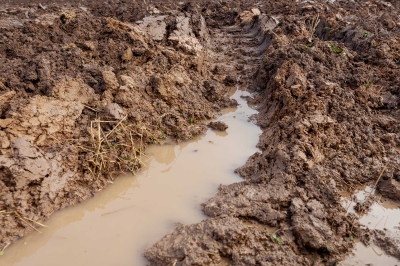There are different types of clay minerals, including the following:Kaolinite and refractory clays: this category withstands temperatures below 1520 degrees Celsius and does not change phase, kaolinite, halogite, pyrophyllite, dickite, and nacrite are among this category

Clays can have different mineral compositions based on the parent Rock from which they were derived and the specific geological processes involved. Minerals like kaolinite, montmorillonite, illite, and others contribute to the unique properties of each Clay type. The plasticity and workability of clay, or its ability to be shaped and molded, vary among different types of clay. Some clays have high plasticity, making them ideal for pottery and ceramics, while others may have lower plasticity and are better suited for other applications. Different types of clay have varying firing temperature ranges. Some clays can withstand high temperatures without deforming or melting, making them suitable for refractory applications, while others are fired at lower temperatures for earthenware or stoneware ceramics.
The absorbency and shrinkage characteristics of clay can vary. Certain clays, like bentonite, have high absorbency and can swell significantly when exposed to water. Others may have lower shrinkage rates during drying and firing processes. Clays can exhibit different colors and appearances based on their mineral content. For example, kaolin clay is typically white, while some clays may have natural pigments that give them distinct colors, such as red or brown. Different types of clay are chosen for specific applications based on their properties. For example, kaolin is used in porcelain production due to its white color and fine particle size, while fire clay is used for its ability to withstand high temperatures in refractory applications.
Clay has different chemicals. Among the practical Building materials for building a building, which has high sales in major distribution centers of building materials, we can mention soil. The type of soil, according to its distinguishing feature, or the grain size, is also placed in different sizes. The sizes available for soil, in relation to its grain, have created a huge transformation for soil structure. There are different types of clay minerals, including the following:
- Kaolinite and refractory clays: this category withstands temperatures below 1520 degrees Celsius and does not change phase, kaolinite, halogite, pyrophyllite, dickite, and nacrite are among this category.
- Ordinary clay or clay: it has small grains and has good plasticity for mold making. Clay minerals, kaolin (porcelain soil), some quartz minerals, calcite, mica and alumina are in this group. This type of soil is used in Brick making.
- Bentonite clays: This type of clay has high plasticity, adhesion and water absorption, and when it absorbs water, its weight multiplies, which is used in the ceramic industry. Bentonite is in this category. It is formed from the decomposition of volcanic ash in salty and swampy areas, and the further away from the volcano, the thickness of bentonite decreases. Mineral pumice and ocher flower or Sand with clay are also placed in this type of soil.
Earthenware clay is a low-fire clay that is fired at relatively low temperatures (around 900-1100°C or 1652-2012°F). It is known for its porous nature and is commonly used in pottery, terracotta, and decorative ceramics. Porcelain clay is a type of clay that is fired at high temperatures and is known for its white, translucent appearance. It has a high proportion of kaolin and is used in the production of fine porcelain and delicate ceramics. The types of clay are:
- Kaolinite and refractory
- Ordinary clay
- Retardant
- Calcareous
- Red
- Bentonite
- bullet
- Sedimentary
Also known as china clay, kaolin is a pure white clay with a fine particle size. It is commonly used in the ceramics industry for making porcelain and fine china due to its high plasticity and low shrinkage when fired. Bentonite clay is a highly absorbent clay composed mainly of montmorillonite. It has a unique property of swelling and forming a gel-like substance when it comes in contact with water. Bentonite is used in various industries, including construction, drilling fluids, and cosmetics.
Ball clay is a sedimentary clay that has high plasticity and fine particle size. It is commonly used in the ceramics industry to improve plasticity and workability of clay bodies. Ball clay is known for its strength and ability to retain moisture. Fire clay is a type of clay that can withstand high temperatures without deforming or melting. It is used in the production of refractory materials such as fire bricks, crucibles, and kiln linings. Stoneware clay is a clay body that is fired at high temperatures (around 1200-1300°C or 2192-2372°F). It has a good balance of plasticity and strength, making it suitable for a wide range of ceramic applications, including tableware, tiles, and sculpture.





